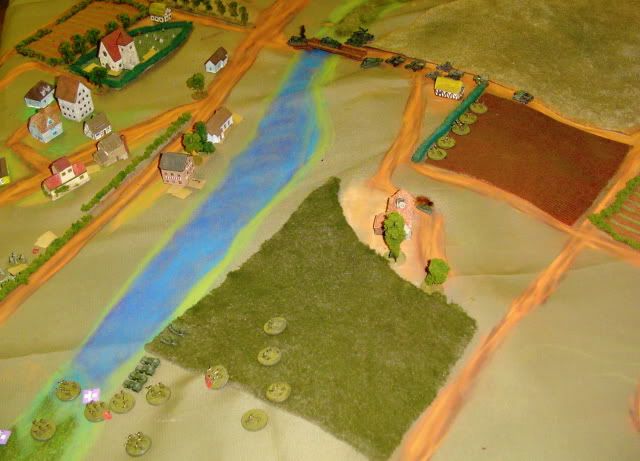Welcome indeed!

As to scenery ... before I try to answer any individual question, it might help if you describe your general approach to scenery. Are you doing GHQ Terrain Maker tiles? Some other form of tile-based game-boards? A sand table? Or some-earth-toned-cloth-and-bits-of-stuff-on-any-table-you-can-find?
My approach is generally in the last category.

But I've played on some mighty fine gaming boards in my time.
For the cloth-and-bits approach, I have made a significant switch in just the last year or so. I am now following the MLuther school of gaming terrain. Mark Luther (mluther on this forum, may be different names in other fora) has shown many games in the "Show us yer games" thread that have remarkable terrain. He has very generously shared his approach and answered many questions put to him. He is the master in this, I am but a student.
The general approach is to use a reasonably thin cloth as your base. Not thick felt, as many gamers (including me in former years) might use. Mark Luther uses colored bedsheets. I have chosen cotton canvas. But I'm thinking bedsheets would have been as good if not better.
The elevations go UNDER the cloth. Roads, slopes and water-courses are DRAWN directly on the cloth using pastels. Vegetation is then added on top of the cloth, using adhesive spray from the sewing supplies store.
Here is a pic from a game I did last fall -- this was the Italian Livorno Division advancing on Loboikivka in in 1941.

The Italians were advancing along a roadway that ran past a slow marshy stream. The Soviets were trying to avoid encirclement by retreating through the advancing Italians, crossing the wooden bridge and reaching the same road the Italians were using.
I used several different pastels. Four tones of green, with a little spray adhesive and static grass for the marshy areas, and two tones of green for the banks of the river where it had deep water. The water itself had 3 tones of blue, going from light near the banks to dark in the middle. (So also the dirt roads were done with 4 shades of tan/brown.) This is not as complicated as it seams -- with pastels you just scribble it one, and rub it around a bit to blend it together. Worked pretty well.
(But I'm not as sure on the cloth. I had chosen canvas in the hope that a stiffer cloth would be less prone to wrinkles. But I now believe that it may be easier to conform a lighter cloth to the elevations without wrinkles appearing. Still learning, I am...)
Hope that helps.


